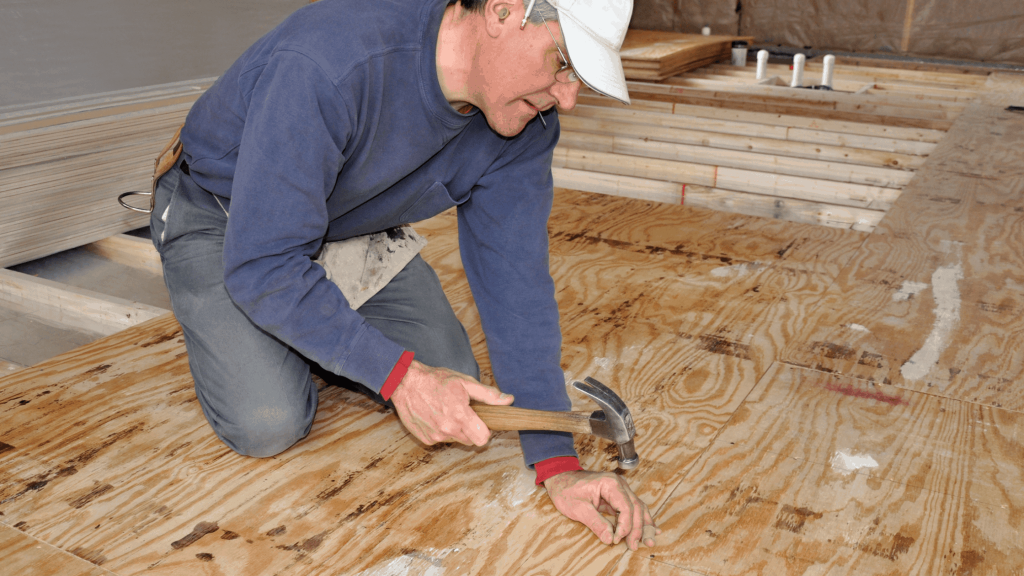When it comes to laminate flooring installation, one step that can make or break the final result is subfloor preparation. Even the highest quality laminate will fail to perform well if it’s installed over an uneven, dirty, or damaged base. A properly prepared subfloor ensures your new flooring is smooth, stable, and long-lasting. But does subfloor preparation fall under the responsibility of the installer? The answer depends on the service you hire and what’s included in the installation process.
What Is Subfloor Preparation?
A subfloor is the surface layer beneath your finished flooring. It provides structural support and a flat base for your laminate. Subfloor preparation involves getting that surface ready for installation, which can include:
- Cleaning away dust, debris, and adhesives.
- Levelling the surface to prevent bumps or dips.
- Repairing cracks, holes, or water damage.
- Adding underlay or moisture barriers where needed.
Common subfloor types include concrete slabs, plywood, and particleboard, each requiring specific preparation techniques to ensure optimal results.
Why Subfloor Preparation Matters for Laminate Flooring
Skipping subfloor preparation can lead to multiple issues, such as:
- Visible gaps or raised edges in your flooring.
- Noisy boards that creak or move underfoot.
- Reduced lifespan of your laminate.
- Increased risk of water damage or mould growth if moisture barriers are not used.
By ensuring the subfloor is smooth, dry, and stable, you’ll protect your investment and enjoy a better finish.
Do Installers Usually Handle Subfloor Preparation?
Most professional installers will inspect the subfloor before starting work. Some include basic preparation, like cleaning and minor levelling, in their standard service, while others may charge extra for more extensive repairs or moisture-proofing. The scope of work can vary greatly, which is why it’s important to clarify this before installation begins. Homeowners often refer to trusted laminate floor installers to understand what services are typically included and whether subfloor preparation is part of the package.
Steps Installers May Take for Subfloor Preparation
Inspection and Assessment
Before laying any boards, installers will check for cracks, moisture issues, or uneven areas.
Cleaning the Surface
They will remove dust, debris, adhesives, or old flooring residues to create a clean base.
Levelling the Floor
Self-levelling compounds or sanding may be used to ensure the subfloor is perfectly flat.
Repairing Damage
Loose boards, holes, or cracks are repaired to provide a stable surface.
Installing Underlay or Moisture Barriers
Underlay adds cushioning, reduces noise, and provides thermal insulation, while moisture barriers protect against dampness from below.
Homeowner Responsibilities Before Installation
While installers handle the technical preparation, homeowners can help by:
- Removing all furniture and personal items from the room.
- Ensuring clear access for tools and materials.
- Discussing any known subfloor issues with the installer beforehand.
How to Confirm If Subfloor Preparation Is Included
Before hiring an installer, ask:
- What’s included in the installation quote?
- Are repairs or levelling charged separately?
- Will moisture testing be carried out?
- Does the warranty cover installation over existing subfloors?
Review contracts carefully to ensure there are no misunderstandings.
Summing Up
Subfloor preparation is an essential step that directly impacts the quality, comfort, and lifespan of your laminate flooring. While many installers include some level of preparation, the extent can vary, so it’s best to confirm exactly what’s covered. By working with professionals who inspect, clean, and prepare the base properly, you can ensure your new laminate flooring looks great and performs well for years to come.
FAQ
1. Can laminate be installed without subfloor preparation?
Only if the subfloor is already clean, dry, and perfectly level.
2. How long does subfloor preparation take before laying laminate?
It can range from a few hours to a couple of days, depending on repairs needed.
3. Do I need underlay if my subfloor is already smooth?
Yes—underlay provides cushioning, sound reduction, and moisture protection.
4. What happens if I skip subfloor preparation?
You risk uneven flooring, noise issues, and reduced durability.

